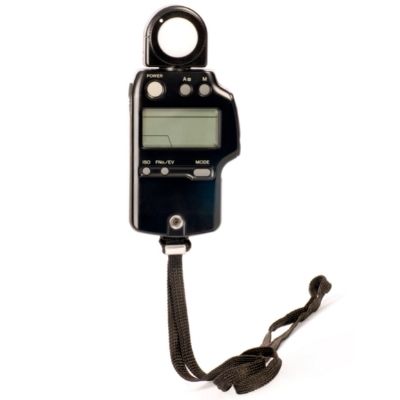Most of the novice gardeners still end up scratching their heads when trying to figure out two things:
- How favorable are the lighting conditions in the house for indoor plants?
- Which type of plant is suitable to grow indoors depending on the lighting location?

In the previous post, we discussed the categorization of different areas of the house depending on the amount of sunlight they receive.
In this post, we will list the indoor plants suitable for full sun, part sun and shade.And also, we will briefly shed some light on the topic of the intensity of light (for those perfectionist gardeners among us who wander around the whole house with a light-meter looking for the perfect sunlight spot.)
Lets first explore the concept of intensity of light for indoor container gardening.
Sunlight intensity for indoor gardening
Comparing indoor and outdoor light situations for plants:
*1 Foot candle = 10 Lux (10.7639 to be precise. But lets round it off )
Lighting indoors
Here is an example of how light concentrations can vary greatly in a number of typical indoor situations.
Home
General illumination – 5 foot candles (50 Lux)
Writing or reading – 20 foot candles (200 Lux)
Sewing – 40 foot candles (400 Lux)
Workbench – 40 foot candles (400 Lux)
Hotels and Restaurants
Dinning hall – 5-10 foot candles (50-100 Lux)
Lobby – 20 foot candles (200 Lux)
Offices
Conference area – 30 foot candles (300 Lux)
Work area – 50 foot candles (500 Lux)
Retail stores
Circulation zones – 20 foot candles (200 Lux)
Merchandising area – 50 foot candles (500 Lux)
Display area – 100-200 foot candles (1000-2000 Lux)
Lighting outdoor
Next, let’s look at the average amount of daylight that is available outdoors on various days.
Sunny summer day – 10000 foot candles (100000 Lux)
Cloudy winter day – 2000 Foot candles (20000 Lux)
It is clear from this data that even on a cloudiest, dreariest, bleakest winter’s day, the light that plants receive outdoors is still substantially greater than the light indoors under average home/office lighting conditions.
What happens when the plant receives less light
Initially, plants show no signs of trouble from lack of light. Many plants can survive with the help of food stored in their roots for a considerable period of time in low light conditions.
Plant will continue functioning normally as long as it has a surplus of food. The plant will eventually become spindly and sparse if it receives so little light that it is unable to produce enough food for itself. In order to gather more light, its leaves will grow larger than normal. Its leaves will also be fewer in number. There will be a frantic stretch of the plant’s stem toward whatever available light is available. Over time, the lower leaves will begin to die, and eventually all the leaves will die.
When it comes to flowering plants, the plant will have adequate foliage growth but won’t be able to bear flowers or set fruit. It may take an entire year or even weeks for the whole process to be completed. Eventually, the light-deprived plant will succumb to the conditions.
To heal the plant, of course we must provide it with more light so that it can resume full-force food production.
For healthy plant growth the right potting mix and the right container also play a crucial part.

You should be careful when making lighting corrections to plants that have been on a restricted-light diet for a while.
Do not make drastic changes to a plant’s lighting at once.
When a plant has been receiving minimal amounts of light for several months and is suddenly thrust into direct sunlight, it suffers as severely as if it had continued on its light-starvation diet. Plants need time to adapt to additional light, so it is best to increase their light exposure gradually.
For those of you who are struggling with natural sunlight in your house or apartment, you can always opt for grow light.
If you live in a cave, there are still ways to increase the amount of light in your home. Human ingenuity combined with the recent boom in indoor gardening has resulted in an abundance of incandescent and fluorescent grow lights for indoor gardening.
Plants to grow in different light levels
High light level plants (Full sun plants)
>1000 Foot candles (>10000 Lux)
- Aloe vera (Aloe barbadensis
- Ficus
- Hibiscus
- Meyer’s lemon
- Polka-dot plant (Hypoestes phyllostachya)
- Orchid cactus
- Jasmine
- Non-hardy azalea (Rhododendron)
- Caladium
- Basil
- Lavender
- Thyme
- Citrus plants
- Ti plant
Medium light level plants (Part sun plants)
250-1000 Foot candles (2500-10000 Lux)
- African violet (Saintpaulia)
- Begonia
- Bird’s nest fern (Asplenium nidus)
- Boston fern (Nephrolepis exaltata Bostoniensis)
- Bromeliad
- Christmas cactus (Schlumbergera)
- Coleus
- Croton plants (Codiaeum variegatum)
- Ivy
- Moon Valley pilea (Pilea)
- Moth orchid (Phaleanopsis)
- Norfolk Island pine (Araucaria heterophylla)
- Palm
- Peperomia
- Philodendron
- Pothos (Epipremnum)
- Spider plant (Chlorophytum comosum)
- Asparagus fern
- Elephant ear
- Rubber plant
- Jade plant
- Wax plant and Hindu rope plant
- Begonias
- Grape ivy
Low light level plants (Shade plants)
50-250 Foot candles (500-2500 Lux)
- Cast iron plant (parlor palm , Aspidistra)
- Chinese evergreens
- Dracaena plants
- Peace lily
- Mushrooms
- Radish
- Scallions
- Mizuna & mibuna
- Arrowhead plant
- Philodendron
- Hoya Plants
- Ferns
- Anthurium plants
- Dieffenbachia plants (dumb cane)
- Maranta (Prayer Plant)
- Zamioculcas zamiifolia
- Schefflera
- Sansevieria
Best indoor locations for edible plants in container
In accordance with the previous post (different areas in the house depending on the sunlight exposure) we have created a cheat sheet to help you make an educated decision on which spots of your house is best for growing your edible plants.
I highly recommend you to read that post to have a better understanding of how we categorized various areas in the house or apartment on the basis of sunlight exposure. (Diagrammatic explanation of different spots and placement of indoor container plants. you can also download the high quality printable infographic for your reference).
In essence we divided the areas in 8 zones. They are as follows:

Fruits and vegetables
Name (Area)
- Calamondin (1, 2, 3, 7)
- Fig (1, 2, 3, 6, 7)
- Peaches (1, 2, 3, 7)
- Nectarines (1, 2, 3, 7)
- Kumquat (1, 2, 3, 7)
- Cape gooseberry (1 , 2, 3)
- Lemons (1, 2, 3, 7)
- Limes (1, 2, 3, 7)
- Oranges (1, 2, 3, 7)
- Mandarin (1, 2, 3, 7)
- Strawberry (1, 2, 3, 4, 6, 7, 8)
- Pineapple guava/Feijoa (1, 2, 3, 7)
- Tomatoes (1, 2, 3, 8)
- Cucamelons (1, 2, 3, 8)
- Sweet peppers (1, 2, 3)
- Eggplants (1, 2, 3)
- Tamarillo (1, 2, 3)
- Chile peppers (1, 2, 3, 8)
- Cucumbers (1, 2, 3)
Herbs and Flowers
Name (Area)
- Calendula (1, 2, 3, 7, 8)
- Sage (1, 2, 3, 7, 8)
- Chives (1, 2, 3, 7, 8)
- Dendrobium orchid (2, 3, 6, 7)
- Basil (1, 2, 3)
- Thyme (1, 2, 3, 7, 8)
- Oregano (1, 2, 3, 7, 8)
- Mint (2, 3, 6, 7, 8)
- Tulip (2, 6, 7, 8)
- Lemongrass (1, 2, 3)
- Scented geraniums (1, 2, 3, 7, 8)
- Viola (1, 2, 3, 4, 7, 8)
- Rosemary (1, 2, 3, 7, 8)
- Parsley (1, 2, 3, 7, 8)
Leaves, sprouts and roots
Name (Area)
- Radish (2, 3, 5, 6, 7, 8)
- Carrots (2, 6, 7, 8)
- Beets (2, 6, 7, 8)
- Sprouts (2, 3, 4)
- Mizuna & mibuna (2, 4, 5,6,7,8)
- Garlic greens (1, 2, 3, 7)
- Mushrooms (2, 4, 5, 6, 7)
- Lettuce (2, 4, 5, 6, 7, 8)
- Bok choi (2, 4, 5, 6, 7, 8)
- Microgreens (1, 2, 3, 4, 5, 7)
- Scallions (1, 2, 3, 5,7)

